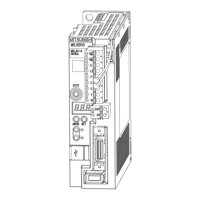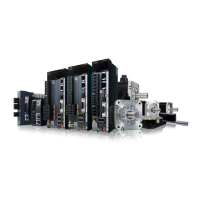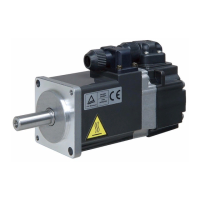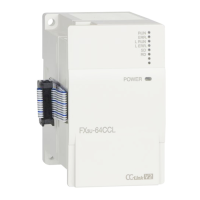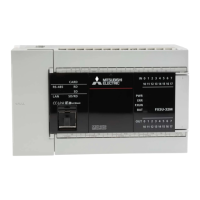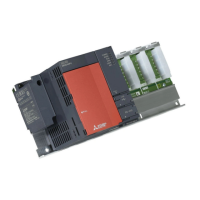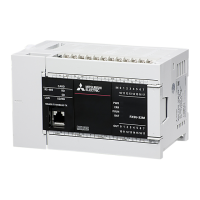3. SIGNALS AND WIRING
3 - 37
3.6.3 Torque control mode
(1) Torque limit
(a) Torque command and torque
The following shows a relation between the applied voltage of TC (Analog torque command) and the
torque by the servo motor.
The maximum torque is generated at ±8 V. The speed at ±8 V can be changed with [Pr. PC13].
ᱜォ
(CCW)
ㅒォ
(CW)
ᦨᄢ࠻࡞ࠢ
࠻࡞ࠢ
CCW
ᣇะ
TC
ශട㔚
[V]
CW
ᣇะ
ᦨᄢ࠻࡞ࠢ
-8
+8
-0.05
+0.05
Generated torque command values will vary about 5% relative to the voltage depending on products.
The torque may vary if the voltage is low (-0.05 V to
㧗
0.05 V) and the actual speed is close to the
limit value. In such a case, increase the speed limit value.
The following table indicates the torque generation directions determined by RS1 (Forward rotation
selection) and RS2 (Reverse rotation selection) when TC (Analog torque command) is used.
(Note) Input device Rotation direction
TC (Analog torque command)
RS2 RS1
Polarity: + 0V Polarity: -
0 0 Torque is not generated. Torque is not generated.
0 1
CCW
(Forward rotation in
driving mode/reverse
rotation in regenerative
mode)
CW
(Reverse rotation in
driving mode/forward
rotation in regenerative
mode)
1 0
CW
(Reverse rotation in
driving mode/forward
rotation in regenerative
mode)
CCW
(Forward rotation in
driving mode/reverse
rotation in regenerative
mode)
1 1 Torque is not generated.
Torque is not generated.
Torque is not generated.
Note. 0: Off
1: On
Normally, connect as follows.
RS2
DOCOM
TC
LG
SD
-8V䌾8V
ࠨࡏࠕࡦࡊ
RS1
(ᵈ)
Note. This diagram is for sink I/O interface. For source I/O interface, refer to section 3.9.3.
-8 V to 8 V
Forward rotation (CCW)
Reverse rotation (CW)
Maximum torque
Maximum torque
CCW direction
CW direction
TC applied voltage [V]
Torque
Servo amplifier
(Note)
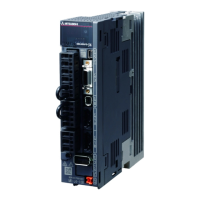
